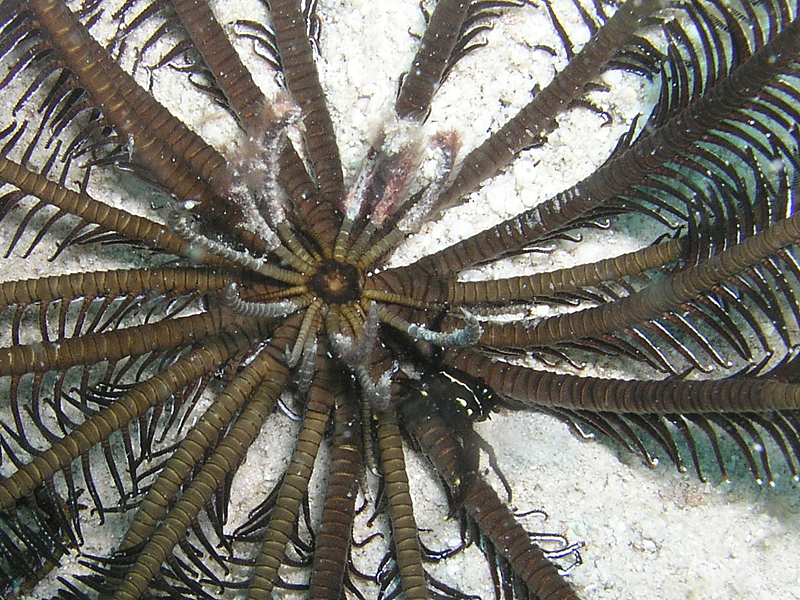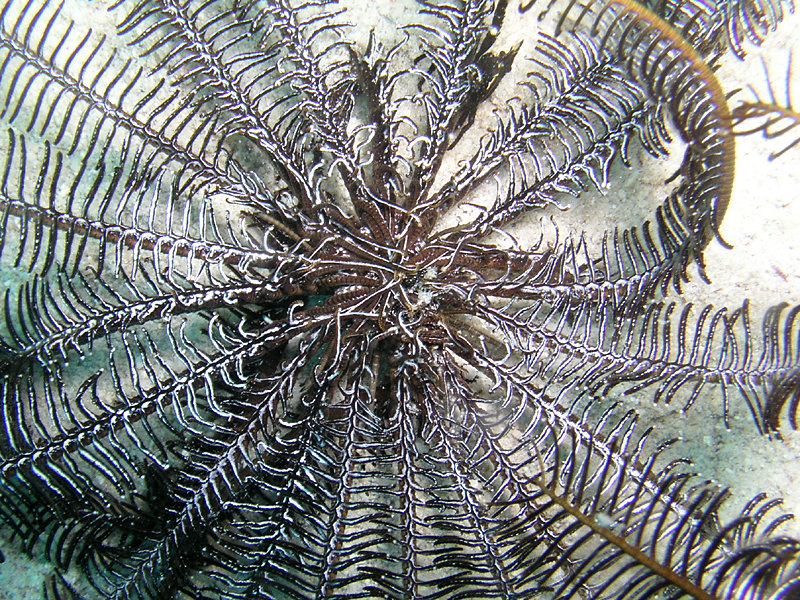
©Lyle Vail and Anne Hoggett: Typical living position of Capillaster multiradiata in a Millepora colony . This one is at Big Vicki's Reef.

©Lyle Vail and Anne Hoggett: Capillaster multiradiatus - underside of the specimens in photo at top of this page
Colours
Distinguishing features
Comasterids are distinguised from all other featherstar families by having terminal segments of the oral pinnules modified to form a comb. Comasterids a also have a distinctive "feel" due to well developed hooks on most pinnules that cause them to cling like velcro.
It has about 20 robust, flexible arms and a good ring of cirri. Usually dark brown or khaki on the underside. A common colour form has brown pinnules speckled with white on the upper surface, but pinnules may be all brown or nearly all white, or have blocks of brown and white.
Another colour form has been observed only at night. These animals are purple or mauve with white. They are completely concealed even at night and withdraw rapidly from light. They may represent an undescribed species of Capillaster.
Size
- Up to 20 cm (Length of specimen) - applies to Diameter up to 20 cm
Depth range
- Depth range data is not yet available.
Synonyms
Distribution
Distribution and habitat preferences
Capillaster multiradiatus is present on most reef slope areas around the Lizard Island group and in the lagoon. They are usually entwined in branches of hard coral or Millepora.
Web resources
References
- Clark, A.M. and F.W.E. Rowe (1971). Monograph of shallow-water Indo-west Pacific echinoderms British Museum (Natural History), London.
- Hoggett, A.K. and F.W.E. Rowe (1986). A reappraisal of the family Comasteridae A.H. Clark, 1908 (Echinodermata: Crinoidea), with the description of a new subfamily and a new genus, Zoological Journal of the Linnean Society, 88: 103-142.
- Meyer, D.L. (1979). Length and spacing of the tube feet in crinoids (Echinodermata) and their role in suspension-feeding, Marine Biology, 51: 361-369. LIRS catalog number 29.
